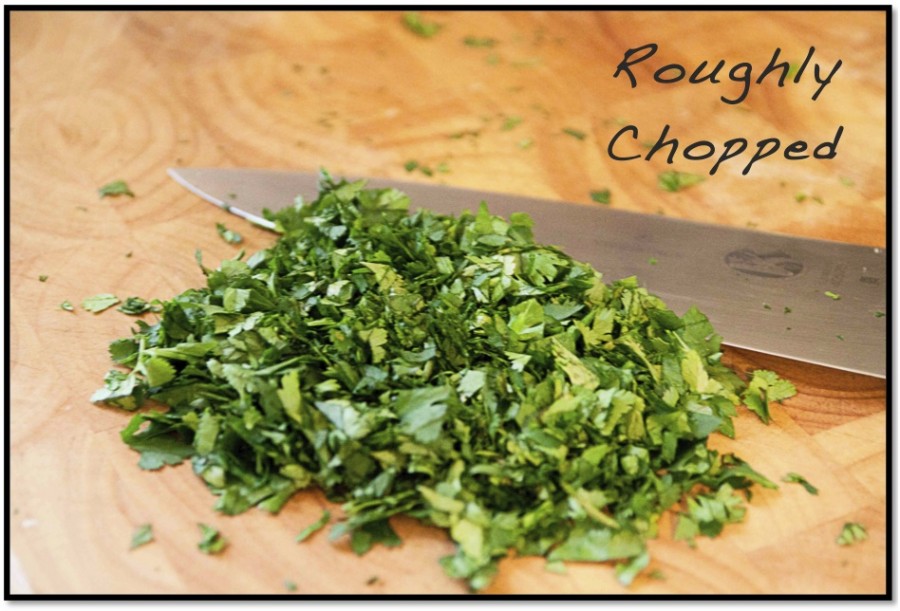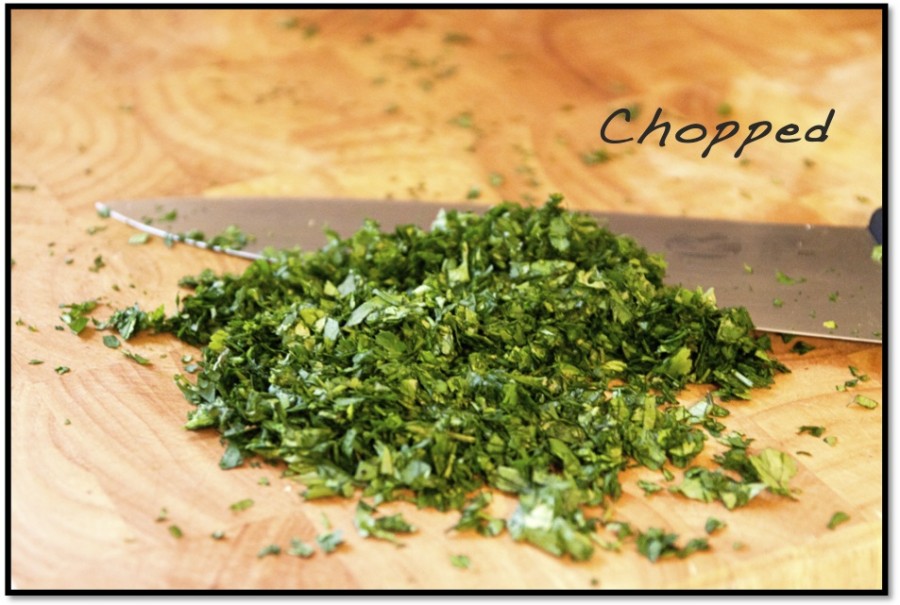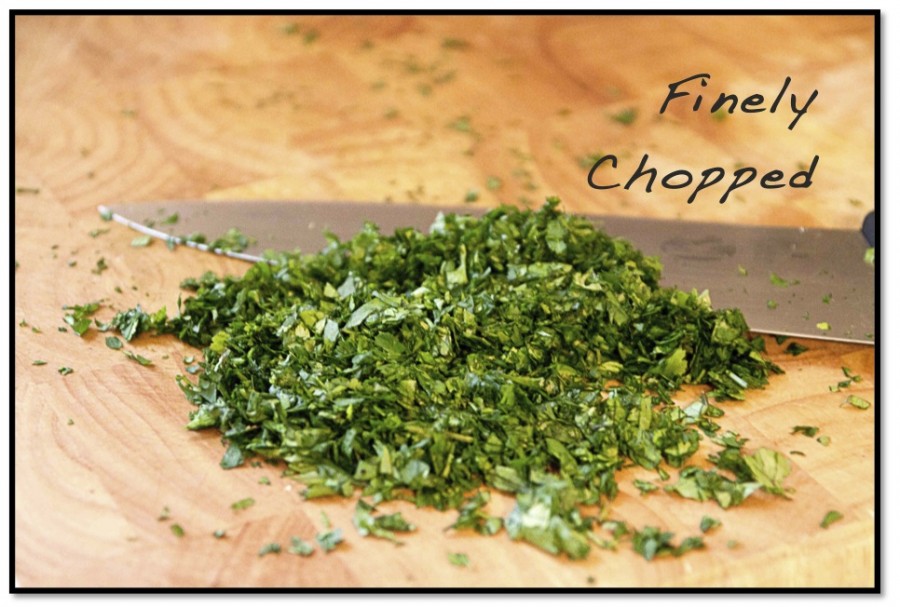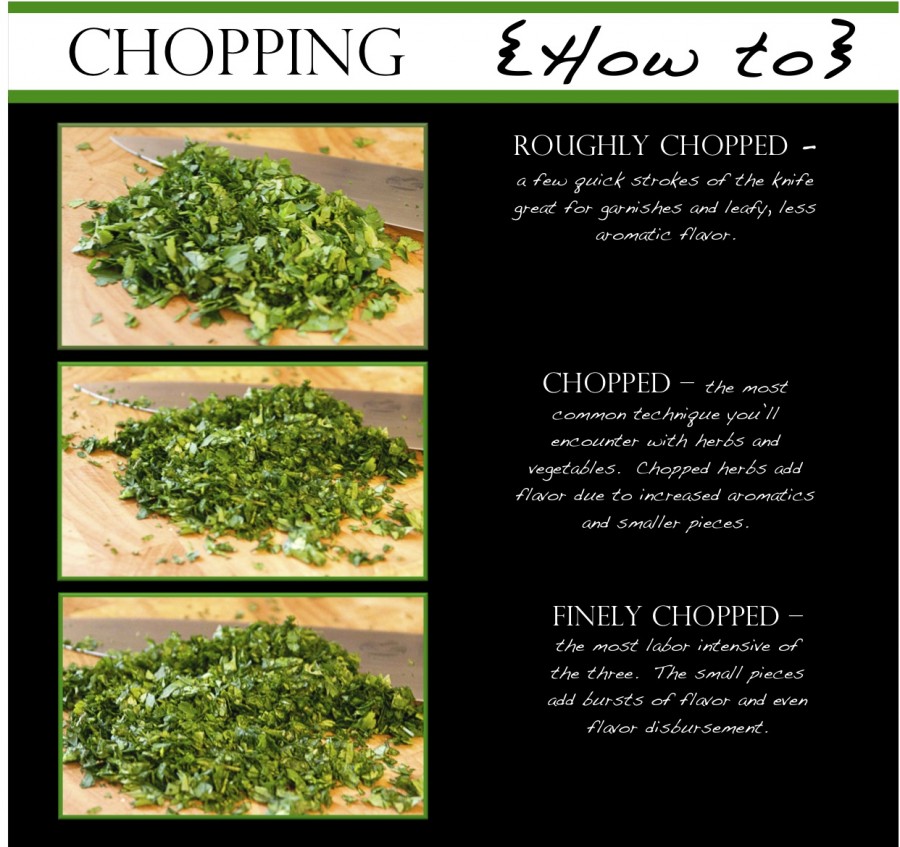loading...
Several months ago, a reader e-mailed me asking about the distinction between the different kinds of chopping.
Her question was really quite simple: when “roughly chopping” a bunch of parsley (as in this recipe here), how much was enough?
And, when did a rough chop become a basic chop?
What if she over-chopped her herbs, and the parsley was too fine?
Would improperly cutting her herbs lead to an imbalance in the flavors of her marinade or dish?
These were excellent questions.
And pretty timely too, as I had recently been re-reading the infamous Ostmann and Baker text, The Recipe Writer’s Handbook, and bookmarked their section on the common mistakes made in ingredients lists with language errors that require stronger distinctions. Often, I take the answer to such inquiries for granted—when I or another food writer says, “roughly chopped,” we tend to assume that our readers are familiar with such basics and that they can see the larger picture of how herbs and cooking techniques fit into a dish. For instance, when we write,
*1 cup green beans (1-inch pieces)
this is not the same as
*1 cup green beans, cut into 1-inch pieces.
Wait, it’s not? Why not? I hear so many of you getting ready to comment and ask. Well, as I am often want to forget, a single cup of green beans that has already been cut into 1-inch pieces is entirely different from a cup of green beans that you then cut into 1-inch pieces. By chopping after you measure your ingredient, you typically diminish the amount of ingredients listed in your recipe. So, if you’re making Grandma’s Green Bean Casserole (like the one here), you’ll want to be sure you have enough green beans, not 3/4 of a cup when you mean a full cup. Make sense?
Allow me to clarify: recipe distinctions–although somewhat minute and not a huge deal when we’re talking about green beans–are actually quite important. They tell us exactly how something is prepared and when and in what way we should prepare it. Or, as Ostmann and Baker say, be sure to
“describe the preparation of ingredients in the appropriate place. For most foods, chopping, slicing, or other preparation is done prior to measuring . . . ‘1/2 cup chopped celery,’ is not ‘1/2 cup celery, chopped.’ The cook must chop the celery in order to measure it.”*
With this information in tow, I referred the reader to a few Internet videos that explain chopping in a step-by-step format, but it’s high time I include such basics here at Clearly Delicious. For a look into three of the most common chopping techniques you’ll encounter–roughly chopped, chopped, and finely chopped–take a look at my primer below. As for fancier sounding styles like, “julienne” I’ll be sure to devote an entire post to these techniques in the new year.
[Perhaps I’m new school, but I never write, “julienne.” I simply say, “short thin strips.”]
It just seems so much easier that way.
Prep School 101: Chopping
For the photos below, I’ve used a bunch of cilantro from my Cranberry Salsa recipe. Since the recipe specifically asks for “a head of cilantro, finely chopped,” I paused and took photos along the way to show you exactly how we go from the first few chops to the final, finer, product.
So, here we go:

Pictured: roughly chopped cilantro, a technique that’s accomplished by a few good chops back and forth with a sharp blade.
What Is It? – Chopping back and forth over the pile of herbs (basil, parsley, or cilantro) with a few hard and serious strokes that break up the leaves from their original form, but stay relatively in tact.
When You’ll Need It – This term feels less common (at least, to me) in the aromatics category as you’ll seldom need to roughly chop an herb unless it’s for a rub or garnish. Roughly chopped herbs have a leafier quality that keeps the majority of the herb together but with increased surface area. I often roughly chop parsley before sprinkling it over a dish when fuller, leafier parsley just won’t do (too much parsley flavor).
The Benefits – By roughly chopping an herb, you break open the flavor and aromatics of the leaf in the same way my mother used to make us take dried Oregano and rub it between our hands as we added it to a dish. It creates smell and enhances flavor, but it’s large enough that you’ll know how much is in a dish since it’s easy to spot and pick out.

Pictured: chopped cilantro, a common technique used for most ingredients.
What Is It? – Hands down, the most common preparation you see in ingredients lists. Chop refers not just to herbs like parsley and cilantro that I list here, but to onions, celery, and really any ingredient that can be “chopped” in the traditional sense. In this regard, “chopping” merely refers to cutting something repeatedly into smaller pieces. I say “smaller pieces” because the end result is any man’s guess, really, as many chefs chop based on personal preference (of course these things are standardized at culinary institutes, but really, what percentage of the world is a professionally trained chef?).
The key, however, is to notice the difference between a chopped herb and a “finely chopped” one. As you’ll see in the next description, finely chopped herbs become so small that their particles will stick to your hands and become fussy when in this state (like glitter, finely chopped herbs can stick to anything and get anywhere and are more trouble to pick up and transport). In this regard, chopped herbs or celery or onions are easy to move around because they’re large enough to handle, but significantly smaller than their original leafier form.
When You’ll Need It – Almost always. Whether you’re making the Cajun or Creole Holy Trinity or chopping cilantro for some guacamole, you’ll need to know how to chop.
The Benefits – All the perks of an aromatic herb–you break into the herb by cutting it numerous times over and over again, receiving significant flavor for a dish. Plus, I like that chopped herbs and vegetables slide off a cutting board easily with a knife, unlike the stickier after-effects of the finely chopped cilantro I discuss below.

Pictured: finely chopped cilantro, the end result of the this three-stage process. At this stage, the herb is its most fragrant, flavorful, and ready to use.
What Is It? – The more labor-intensive of the three techniques listed here. Finely chopping a head of parsley or cilantro really takes dedication and gumption. It means going past the first two stages of chopping and really sticking with it–knowing that you’re not done until you’ve truly pummeled the herb with your knife. Pummeled may feel like a strong word choice, but it speaks to the necessity of repeatedly striking something over and over again with your knife, which is exactly what “finely chopping” an herb does–chopping back and forth over and over and over again until the herb looks nothing like its original leafy form and more like a green pile of tiny pieces.
When You’ll Need It – Sometimes. I suggest finely chopping the cilantro in the Cranberry Salsa recipe, but chopped would have been fine.
The Benefits – Tiny bursts of flavor and quick flavor disbursement are among the two key benefits of finely chopping any herb. Whether it’s salsa or pesto, finely chopped herbs seem to disappear amongst other ingredients and bring life to an otherwise bland dish. By disbursing easily, herbs allow you to balance flavors more readily across the board unlike when you’re using “roughly chopped” leaves that may only be in a few parts of the blend. Additionally, you’re releasing as much of the flavor and aroma of an herb when you use this method. Because the green becomes pulverized, it’s significantly more potent and flavorful.
So, let’s review:

*page 18 of the Recipe Writer’s Handbook, revised and expanded 2001/2009.
—
Follow me on Pinterest: http://pinterest.com/helana/
Twitter: https://twitter.com/DancesWLobsters
Facebook: https://www.facebook.com/pages/Clearly-Delicious/103136413059101
Tumblr: http://clearlydelicious.tumblr.com/
Prep School 101: Chopping,

No Comments